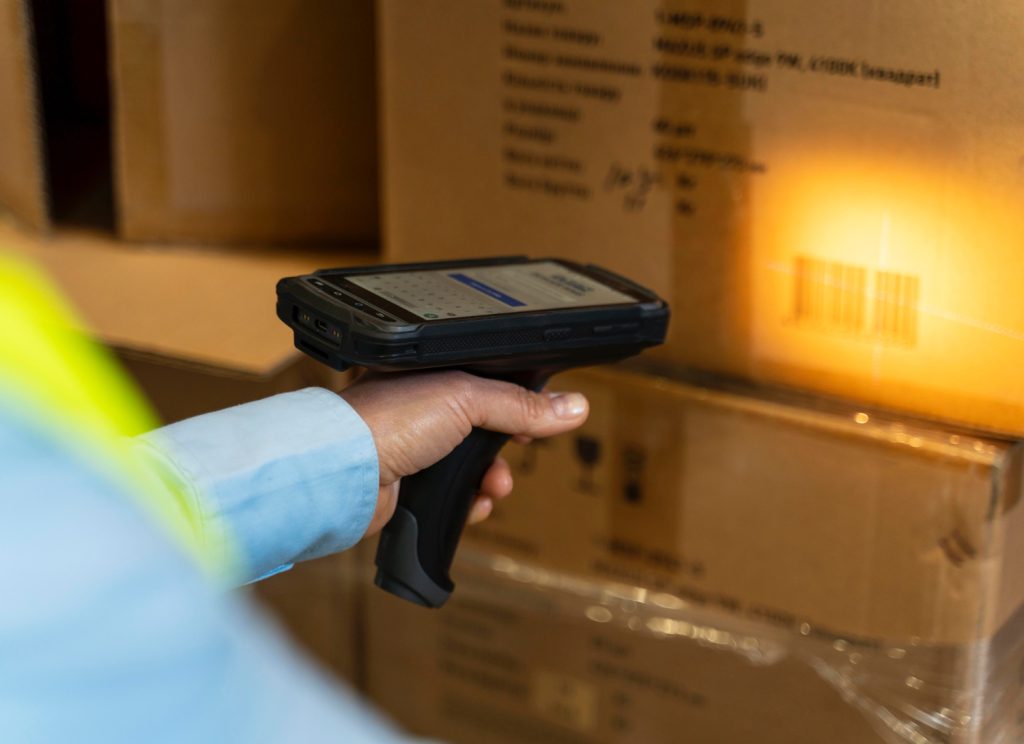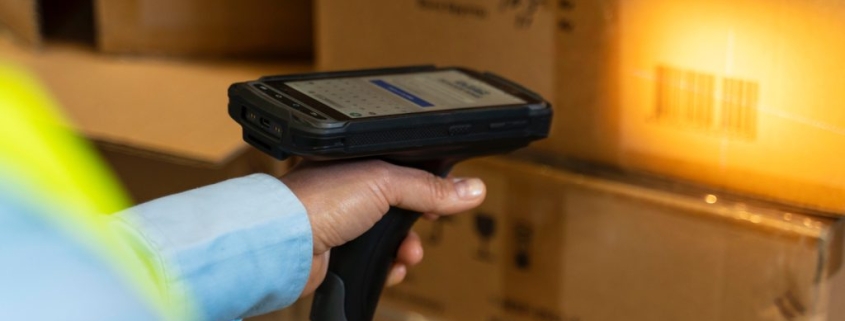RFID Tracking vs. Barcode: Which Is Better?

Over the past few years, businesses have become more dependent on technology to increase efficiency and streamline workflows. Several systems are popular for managing physical assets, such as RFID(Radio Frequency Identification) and barcodes. Each has its pros and cons, and understanding these can help organizations determine which system is ideal for them.
Modern RFID tracking systems and traditional barcode technology both offer unique advantages, making the choice between them a critical decision for businesses looking to optimize their inventory management processes.
Understanding RFID Technology
Radio Frequency Identification (RFID) is a technology that uses radio waves to identify and track tags attached to objects. Each item has a small electronic tag with a microchip and antenna attached to it. These tags can transmit and store data, and they can communicate with RFID readers without requiring a direct line of sight. This feature enables scanning of multiple items at once, saving time on operations and reducing labor costs.
Different types of RFID tags are used based on their purpose, which also determines their cost. Passive tags are cheaper and powered by energy from the reader when transmitting data, while active tags are powered by a battery, enabling them to transmit signals over greater distances.
Exploring Barcode Systems
Barcodes are frequently encountered in retail and logistics operations. These consist of black and white lines that represent data and need to be read by a scanner. Unlike RFID, barcodes require line of sight, meaning each item must be scanned individually. This can be a time-consuming process, particularly in high-volume inventory environments.
However, barcodes are inexpensive and simple to implement. They can be printed on stickers and attached to almost anything, and because barcode technology is widely established, it becomes a reliable choice for most businesses.
Cost and Implementation Comparison
When considering cost, barcodes often come out ahead initially. Printing labels costs very little, and barcode scanners are relatively inexpensive to purchase. In contrast, RFID systems require a higher upfront investment for tags and readers. However, the cost of RFID technology has been decreasing over the years while offering greater efficiency.
Barcode systems are quick and easy to implement with minimal training required. RFID systems are more complex but offer automation advantages that can reduce labor costs in the long run and provide enhanced accuracy in inventory management.
Accuracy and Efficiency
RFID technology offers superior accuracy compared to barcodes. Since it doesn’t depend on line of sight, it eliminates the chance of human error while scanning. The ability to scan multiple items simultaneously can significantly improve efficiency, especially in larger warehouses.
According to the National Institute of Standards and Technology, RFID systems can process hundreds of items per minute compared to barcodes’ one-at-a-time scanning approach. While barcode systems are accurate, they require manual scanning of each item, which increases the risk of errors, particularly in fast-paced environments. However, smaller operations may not see a significant enough accuracy difference to justify switching to RFID initially.
Durability and Environmental Considerations
RFID tags generally have a longer lifespan than barcodes and are resistant to various conditions, including extreme temperatures and humidity, allowing them to function in diverse environments. This increased durability means less frequent replacement of tags.
Barcodes are more susceptible to damage and can become unreadable due to scratches, smudges, or fading. This vulnerability can be a significant issue in situations where items are handled frequently or exposed to harsh conditions.
Integration and Compatibility Features
Integrating RFID technology with existing systems can be more challenging than implementing barcodes. RFID often requires software modifications and infrastructure upgrades. However, once implemented, RFID systems provide valuable real-time data that enhances decision-making capabilities.
Most available software solutions already include barcode integration capabilities, and their compatibility with numerous platforms makes them a suitable option for most businesses. The widespread adoption of barcode technology means that support and resources are readily available.
Conclusion
Choosing between RFID tracking and barcodes is a complex decision influenced by various factors, including operational requirements, budget constraints, and the environment where the technology will be used. RFID offers benefits in terms of speed, accuracy, and durability, making it ideal for large-scale operations. However, the initial cost and complexity of integration can be significant obstacles.
For smaller businesses or those with less complex inventory needs, barcodes remain a viable option due to their lower cost and ease of implementation. Ultimately, the decision should be based on what the organization hopes to accomplish and whether the chosen system aligns with available resources and long-term goals.













Leave a Reply
Want to join the discussion?Feel free to contribute!